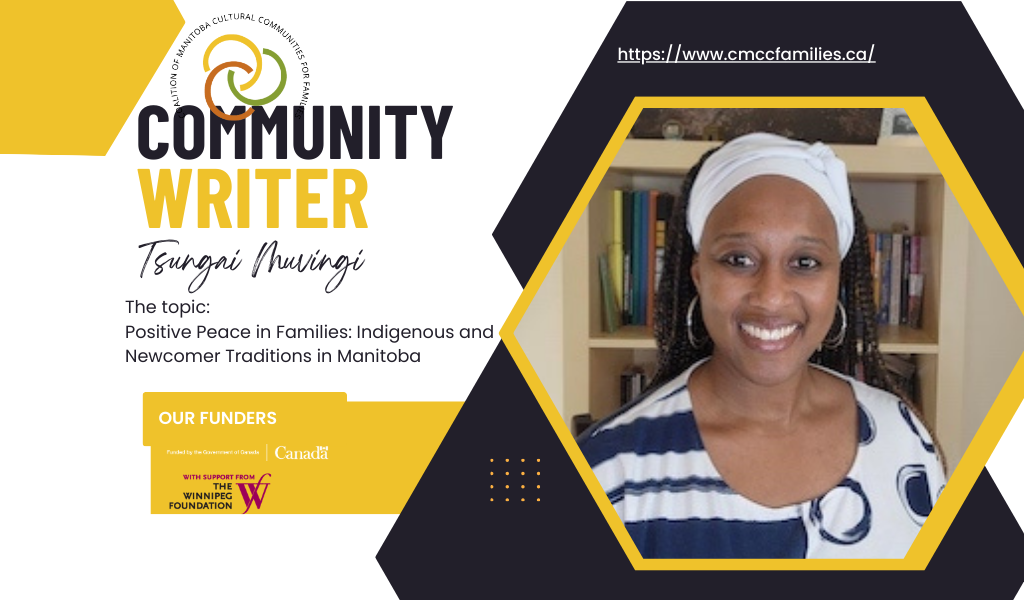
Peace is more than the absence of conflict—it is the presence of care, trust, and mutual respect. This deeper kind of peace, known as positive peace, begins not in the halls of power but within the walls of our homes. In Manitoba, a province rooted in Indigenous history and shaped by waves of immigration, families carry distinct yet interconnected traditions of building peace. These practices quietly nourish not only their households but the wider communities around them.
Within a family, positive peace shows itself in small, daily gestures—a parent listening fully to a child, siblings resolving disagreements with kindness, and elders sharing stories that carry wisdom across generations. These acts may seem simple, even ordinary, but they are the roots of community peace. A family that practices respect, open communication, and patience is nurturing its members and shaping how those members will move through the wider world.
In Manitoba, a province rich in cultural diversity, families from many backgrounds bring their own understandings of peace. Each tradition offers a lens, a unique way of seeing and building harmony.
Among Indigenous peoples in Manitoba—such as the Anishinaabe, Cree, Dakota, and Métis—peace is built on relationship and responsibility. Mino-Bimaadiziwin, or “the good life,” speaks to living in harmony with the land, others, and oneself. Family is at the heart of this, where teachings are passed down not just through instruction but through example and story.
Central to Indigenous peace traditions are the Seven Sacred Teachings: love, respect, courage, honesty, wisdom, humility, and truth. These values are not abstract; they are lived out in the ways families speak to each other, listen, forgive, and share. For many, the circle—used in talking circles, healing gatherings, and ceremonies—embodies equality and the importance of every voice. Children grow up learning that peace is not something you wait for but something you practice daily through balance, responsibility and care for all living things.
Newcomer families arrive from around the world, bringing their rich peace traditions, shaped by faith, culture, and often resilience. Many come to Manitoba seeking refuge from violence or upheaval. The process of rebuilding in a new land often deepens the meaning of peace within families, who must rely on each other to heal, adapt, and grow.
In Filipino households, peace is woven through kapwa—a deep sense of shared identity and compassion. Respect for elders, close-knit family bonds, and collective decision-making create homes where everyone belongs. In Syrian families, peace often finds expression in hospitality and prayer, in gathering around shared meals and stories that link generations across distance and memory.
Newcomer families from across Africa’s distinct countries may draw from traditions where extended family structures and community care are central. Peace here is practical: resolving conflict through dialogue, honoring elders’ wisdom, and raising children with a strong sense of cultural pride and moral grounding.
For Ukrainian families fleeing recent conflict, peace often lies in cultural continuity—teaching traditional songs, foods, and language as a way to preserve identity and instill hope.
Across these diverse backgrounds, a common thread emerges, peace is active, not passive. It is in the work of listening, of holding space for grief and joy, of teaching the next generation to see each other with compassion.
When families live out these values, their homes become oases—and more than that, seeds of broader community peace. Schools, neighborhoods, and workplaces begin to reflect the quiet strength of these traditions. In Manitoba, where Indigenous and newcomer stories continue to shape the land, positive peace is not just a vision for the future. It is already unfolding in the everyday courage and care of families.
As families cultivate positive peace, they become quiet beacons in their communities. Children raised in such homes learn to value dialogue over division. They carry these lessons into classrooms, workplaces, and public life. Neighbours begin to trust each other more. Differences become something to learn from, not fear. Community peace, then, is not a top-down imposition but a collective, lived experience—rooted in the way we love and live with those closest to us.
In a world often focused on grand gestures, perhaps the most transformative work of peace begins at the kitchen table, in the bedtime story, in the forgiveness offered after a long day. Positive peace in families is not just possible—it’s already happening, quietly shaping a more compassionate Manitoba.

This article was written by community writer Tsungai Muvingi as part of our – Community Writers Project. All thoughts and opinions expressed are Tsungai’s own. You can learn more about Tsungai on our team page here.
To learn more about our Building Bridge project, you can click: Here

 Previous Post
Previous Post
